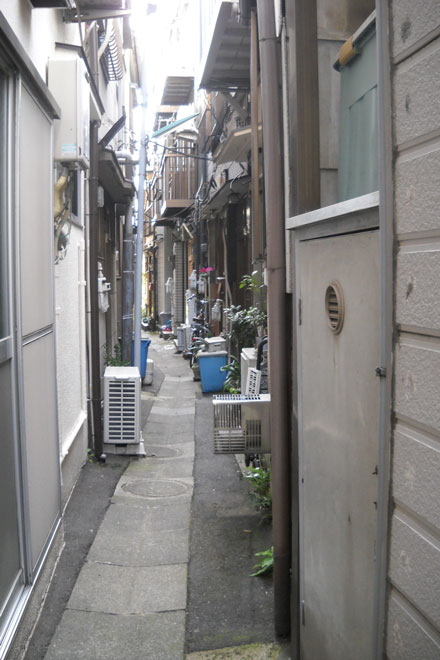By Yukiko Tanaka
For The North American Post
If you walk straight on Harumi-dori from Ginza instead of turning westward to get to Tsukiji Market and Hama Detached Garden, you will see Kachidoki Bridge, the last bridge over the River Sumida. To get to Tsukishima and Tsukudajima you take this bridge. There are quite a few bridges on the river now but only a few were in the Edo era (thus many people drowned to death due to fires, which broke out quite often). When Kachidoki Bridge was completed in the 15th of Taisho years, people talked about it a lot since it was a rare drawbridge. Many came even from afar to see it, among them I as a child was one. When a new bridge replaced the old one in 1970 it was a stone-and-steel bridge like the rest.
Tsukishima is on the land reclaimed during the Meiji era. Among more recently reclaimed pieces of land is Harumi, to which you go over Asaka Canal. It does not seem much used except that there is a terminal for passenger ships going long distances. In 2020, when Tokyo will host the Olympics, however, there will be facilities for the athletes. When I went there in 2015 all I saw, beside a large ship, were barbed fences along the water.
It is very different in Tsukishima. The location is close to Tsukiji and Ginza, where hardly any apartments or condominiums exist and even the ones that do, have prohibitive rent, but from Tsukishima you can walk or ride a scooter if in hurry. This is a reason for the many towering condominium buildings (manshon, as Japanese call them) in Tsukishima and Tsukudajima. The area was under a redevelopment rush a few decades ago, being advertised as “waterfront living.” On these man-made islands created around the hyper-busy Tokyo central district are the lives of ordinary families and working people.
Tsukishima is famous for its plentiful monja-yaki eateries mainly located on Tsukishima–dori. It is a pancake with diced squid or shrimp mixed with vegetables; customers cook it themselves on a grill set up on their table and then eat it with a special sauce. I have often wondered why and how such an ordinary dish became so popular, but people go all the way to Tsukishima to eat it. It may have something to do with the ambiance of the town, which escaped US firebombing.
You can see nagaya, row houses, in a part of Tsukishima. Built in the early Showa era, these houses are made of wood and stand in rows with a very narrow passage, the roji alleys, between. Since the front doors of these houses face the roji, residents of nagaya here see each other during the course of the day. With no yard around, children play on the roji and cats walk through the potted plants ubiquitously placed by entrances. What I describe here reminds us of the life prior to the era in which Japan was about to achieve high economic growth, the era of my childhood when things were not that much different from pre-war years.
Tsukishima in those days was where people who worked at factories and markets lived, and such an ambiance has not entirely gone. It is somewhat different from life in concrete high rises. I have come across a newspaper article recently which tells me that a group of residents are getting together in order to discuss ways how a “nagaya lifestyle” can best be enjoyed and preserved. Walking in the neighborhood of Tsukishima reminds of Ningyocho, both of which will make my generation and older generations nostalgic of a bygone lifestyle. For the younger generations, they provide a glimpse of what life was like in Tokyo.
[Editor’s Note]
This series will be published every week. The writer can be reached atytanaka03@gmail.com.







